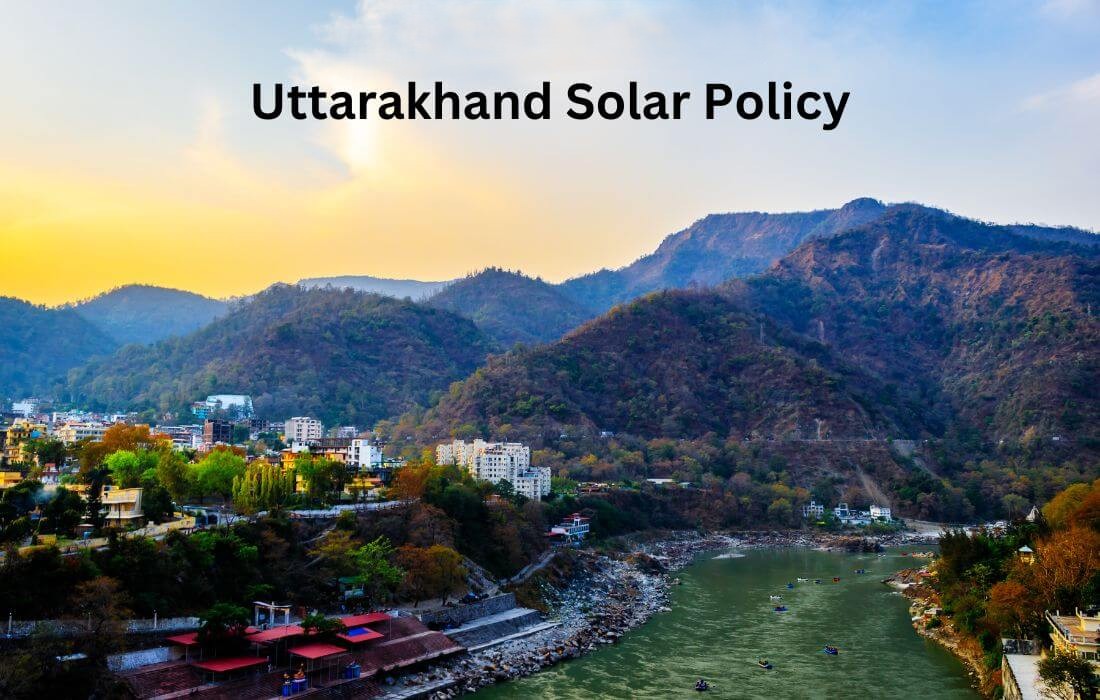Uttarakhand, with its abundant sunshine (even in winter) and mountainous terrain, is steadily making strides in solar energy deployment. The state government has recently rolled out a new solar/solar energy policy targeting rooftops, self-employment, and distributed generation.
Policy Targets & Scope:
• The policy sets a target of 2,500 MW (2.5 GW) of solar capacity by 2027, including 250 MW from residential rooftop installations.
• Under the rooftop scheme, the state plans to facilitate 40,000 installations by 2027 in association with Uttarakhand Power Corporation Limited (UPCL).
• The flagship self-employment scheme (Mukhyamantri Saur Swarojgar Yojna, MSSY) allows residents to set up small solar plants (20-200 kW) for income generation and local employment.
Key Provisions & Features:
🔹 Subsidies & Rooftop Incentives
• Under one scheme, residential rooftop systems in Uttarakhand receive subsidies such as ₹30,000 for 1 kW, ₹60,000 for 2 kW, and up to ₹78,000 for 3 kW and above.
• Rooftop installations benefit from combined central and state subsidies, reducing the upfront cost significantly.
🔹 Tariffs & Self-Employment Model
• Under the MSSY program, the generic tariff for small solar projects (20/25 kW) has been set at ₹4.64 per kWh, and this tariff has been extended through March 2026.
• The self-employment scheme encourages local entrepreneurs, returning migrants, and rural residents to deploy solar plants and sell power to UPCL.
🔹 Ease of Installation & Rooftop Focus
• For rooftop systems up to 10 kW (or small capacities), the technical and regulatory burden has been reduced in many cases, making it easier for households to participate.
• The policy emphasizes distributed solar and rooftop rather than only large parks, aligning with Uttarakhand’s terrain and energy needs.
What It Means for Stakeholders:
• Homeowners / Residents: A good opportunity to bring down electricity bills, benefit from subsidies, and contribute to clean energy. The reduced cost and simplified process make solar adoption more viable.
• Local Entrepreneurs & Farmers: Through schemes like MSSY, individuals can become power producers, lease land or roofs, get guaranteed tariffs, and create self-employment.
• Developers & Investors: With clear targets and policy backing (2.5 GW by 2027), Uttarakhand is emerging as a viable state for deploying solar systems—especially small/medium scale and rooftop/distributed systems.
• State Energy Landscape: The push helps reduce reliance on fossil fuels, aids rural electrification, utilization of roof-space, and solar across terrain, and supports energy self-sufficiency in the hills.
Challenges & Things to Keep in Mind:
• While targets are ambitious, terrain, grid connectivity, evacuation, and maintenance in hilly regions can pose additional challenges.
• For rooftop systems, proper roof suitability, shading (mountain terrain), snow/seasonal effects, and vendor quality must be checked.
• The subsidy schemes may change or have eligibility criteria—always confirm with the latest state-nodal agency guidelines.
• The self-employment scheme requires that beneficiaries have the right technical, financial, and land/roof resources.
• Understanding long-term tariff, PPA, maintenance, and net-metering/offset terms is crucial for economic viability.
The Road Ahead:
With this policy, Uttarakhand is aiming to transform solar energy from a niche alternative to a mainstream part of its energy mix. If implemented well, the state could harness its sun-rich potential, empower rural communities, and create a sustainable energy future in the Himalayas.




